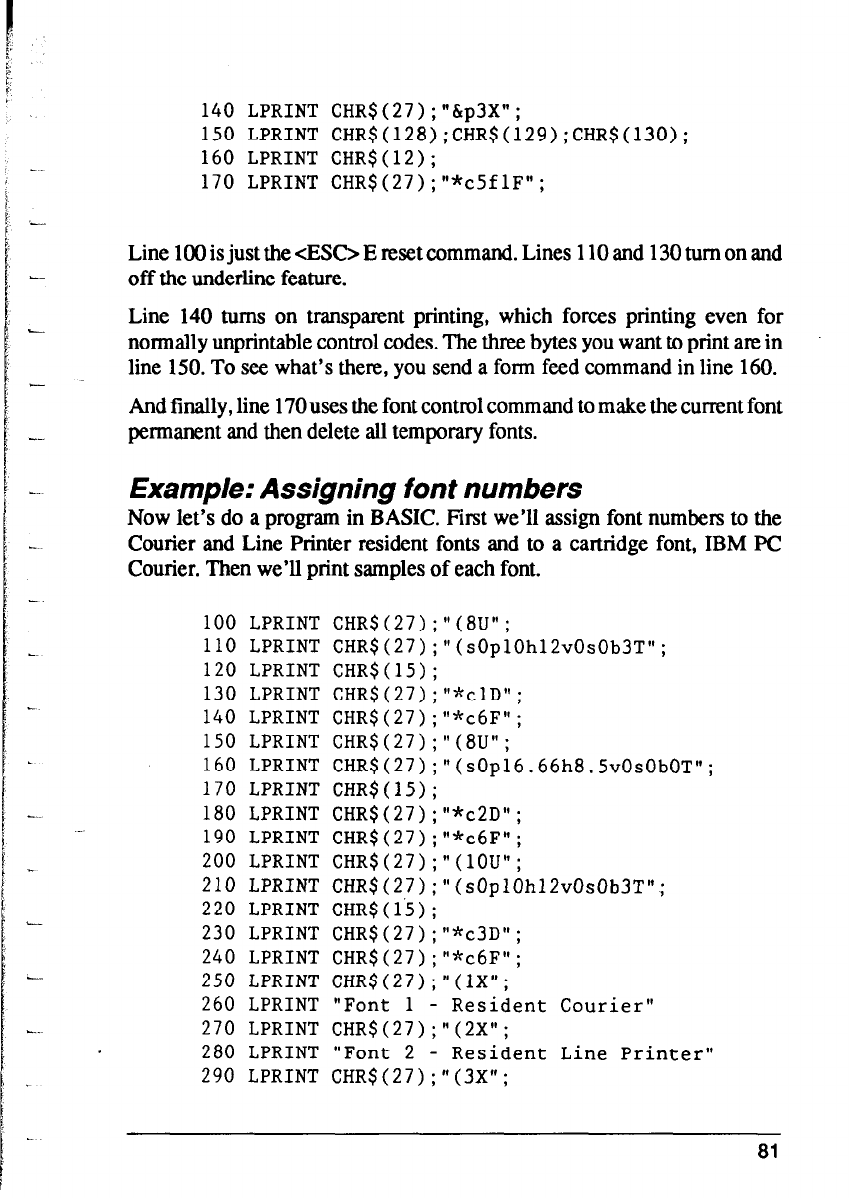
_
i_
--.
_
-.~
c_
..__
. .
140 LPRINT CHR$(27);"&p3X";
150 LPRINT CHR$(l28);CHR$(129>;CHR$(l30);
160 LPRINT CHR$(12);
170 LPRINT CHR$(27);"*c5flF";
Line 100 is just the <ESO E reset command. Lines 110 and 130 turn on and
off the underline feature.
Line 140 turns on transparent printing, which forces printing even for
normally unprintable control codes. The three bytes you want to print are in
line 150. To see what’s there, you send a form feed command in line 160.
And finally, line 170uses the font control command to make the current font
permanent and then delete all temporary fonts.
Example: Assigning font numbers
Now let’s do a program in BASIC. First we’ll assign font numbers to the
Courier and Line Printer resident fonts and to a cartridge font, IBM PC
Courier. Then we’ll print samples of each font.
100 LPRINT CHR$(27);"(8U";
110 LPRINT CHR$(27);"(sOp10h12vOsOb3T";
120 LPRINT CHR$(15);
130 LPRINT CHR$(27);"*clD";
140 LPRINT CHR$(27);"*c6F";
150 LPRINT CHR$(27);"(8U";
160 LPRINT CHR$(27);"(sOp16.66h8.5vOsObOT";
170 LPRINT CHR$(15);
180 LPRINT CHR$(27);"*c2D";
190 LPRINT CHR$(27);"*c6F";
200 LPRINT CHR$(27);"(1OU";
210 LPRINT CHR$(27);"(sOp1Oh12vOsOb3T";
220 LPRINT CHRS(1.5);
230 LPRINT CHR$(27);"*c3D";
240 LPRINT CHR$(27);"*c6F";
250 LPRINT CHR$(27);"(1X";
260 LPRINT "Font 1 - Resident Courier"
270 LPRINT CHR$(27);"(2X";
280 LPRINT "Font 2 - Resident Line Printer"
290 LPRINT CHR$(27);"(3X";
81


















